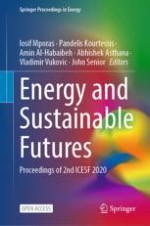
Open Access 2021 | OriginalPaper | Buchkapitel
24. Innovative Strategy for Addressing the Challenges of Monitoring Off-Shore Wind Turbines for Condition-Based Maintenance
verfasst von : Amin Al-Habaibeh, Ampea Boateng, Hyunjoo Lee
Erschienen in: Energy and Sustainable Futures
Aktivieren Sie unsere intelligente Suche, um passende Fachinhalte oder Patente zu finden.
Wählen Sie Textabschnitte aus um mit Künstlicher Intelligenz passenden Patente zu finden. powered by
Markieren Sie Textabschnitte, um KI-gestützt weitere passende Inhalte zu finden. powered by